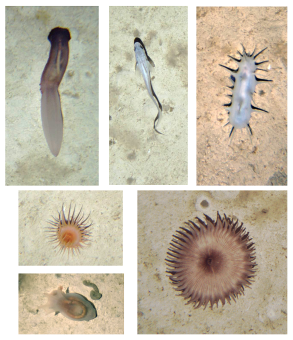New findings from researchers at the National Oceanography Centre (NOC) indicate that seafloor communities will be more impacted by climate change the deeper they are in the ocean.
These deep-sea communities are important in the food chain, are highly diverse, and help control the long-term burial of carbon in seafloor sediments. They are, however, almost wholly dependent on ocean surface ecosystems for their food supply.
This food supply of slowly sinking particulate organic carbon (POC), also known as marine snow, is the product of biological activity in shallow, sunlit waters. After a descent of up to 11 km, this snow falls on the seabed where it fuels deep-sea communities. Climate change and ocean acidification are forecast to decrease biological activity in the surface ocean, with implications for the seemingly remote deep-sea floor.
Scientists at the NOC used present-day and future simulations of the surface-ocean plankton community to predict the production of marine snow. They examined how the time taken for marine snow to arrive on the seafloor varied naturally by location and season, and how it changed under extreme high and low future climate change scenarios.
Lead author, NOC scientist, Dr Andrew Yool said, “We know there’s huge variability in the when, the where, and the seasonal pattern of marine snow production at the surface, but we really wanted to know how this impacted the living organisms at the seafloor.”
To do this, the researchers used a new deep-sea ecosystem model called BORIS (Benthic Organisms Resolved In Size). Based on detailed field data from multiple sites, the model uses the incoming food supply to drive the simulated distribution of biomass (living tissue weight) across a spread of organism sizes from tiny microbes to larger, more familiar organisms, such as worms and shrimps.
Dr Yool added “We found our simulated seafloor organisms to be more tightly governed by what happens above them than we expected and that, when it came to climate change, the deeper they were, the greater the change they experienced relative to their shallower cousins.”
Against a backdrop of falling production of marine snow (−11%) by the year 2100, the results showed shallower deep-sea communities increased slightly (+3%) in the warmed world, but deeper-sea communities experienced a major decline (−30%) under a high greenhouse gas emissions scenario.
Co-author, Dr Henry Ruhl, also from the NOC, said, “The continued development of this model will help us to better understand the functioning of deep-sea ecosystems, and bridge our knowledge from local studies to wider-scale management and policy issues.”
This study received funding from the Natural Environment Research Council’s (NERC) National Capability and earth system modelling Long-Term Science Multi-centre programmes, and from the European Union’s CRESCENDO project (https://crescendoproject.eu).
Reference
Yool A, Martin AP, Anderson TR, Bett BJ, Jones DOB, Ruhl HA. Big in the benthos: Future change of seafloor community biomass in a global, body size resolved model. Glob Change Biol., 2017. https://doi.org/10.1111/gcb.13680

